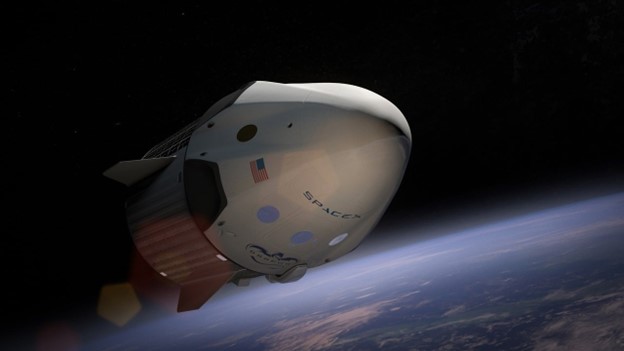The Chinese Communist Party (CCP) contends that controlling information through data manipulation, content restriction, and bot sharing on social media is key to modern cognitive warfare, according to a report published this week by the Jamestown Foundation. Freedom-loving people, and the governments they select to represent them, can no longer ignore the national threat emerging from the mass manipulation of TikTok and its parent company ByteDance by the CCP. The Chinese leadership uses the platform to serve its own malevolent purposes.
TikTok, which is controlled by ByteDance and ultimately answerable to the CCP, is not the equivalent of its Western social media rivals. The CCP has the ability to leverage the platform directly while TikTok has no practical or legal means to resist its pressure. The Jamestown report analyzes the CCP’s capability and intent and concludes that the social media platform is “Controlled by ByteDance and ultimately answerable to the CCP… TikTok has become a powerful tool to influence mass sentiment. While harder to prove that it has influenced the views of tens of millions of monthly active users in the United States due to the opacity of the platform’s recommendation algorithm, certain preconditions for doing so are clearly met,” it points out. The report also argues that the company needs to be separated from the CCP itself to protect US national security. It is unlikely to occur under the Biden Administration.
ByteDance is located in China, has its own party committee, and is closely linked the party-army-state apparatus. Those ties come with numerous obligations and are subject to strong coercive state power. The CCP uses its influence to manipulate narratives and information to damage and weaken its adversaries and to achieve strategic advantages, according to the report. TikTok aids the CCP by manipulating its users on a mass scale. Jamestown Foundation experts also say that it is conceivable that other Chinese apps, including mobile games and e-commerce platforms, are also involved in manipulating American public opinion according to the CCP’s preferences. There are also indications that TikTok may have acted illegally, according to the report, in its “handling of users’ data” and how it “conducted other malicious activities, such as tracking journalists.”
Unlike the United States, China’s security apparatus can compel cooperation using extralegal coercion. Like other companies, ByteDance is under the CCP’s strict whole-of-society surveillance and control mechanisms and enforced using the state’s intelligence apparatus. The report points out that ByteDance has signed a strategic cooperation agreement with the Ministry of Public Security and integrated its cyber police into their platforms to censor content. ByteDance has gone beyond passive collaboration and offered to work with numerous PRC agencies. It prioritizes material in a specialized review queue and directly reports material deemed “inappropriate” to the cyber police.
How far does the reach of China’s control extend? (Call it a coincidence, however, while writing this article my computer was attacked, apparently, and access to the Jamestown Foundation website blocked with a message that I was “not allowed” to access the site.)
Inside China, Bytedance has no choice. It must conform to China’s national security laws in place since 2014. Company documents reveal that moderators were told to censor political speech in livestreams and punish those who harmed “national honor” while padding feeds with content from “shadow accounts” operated by company employees posing as regular users. The updated 2021 Data Security Law goes further and mandates a centralized system for data security, with a global reach affecting PRC companies and their overseas subsidiaries, to assess and monitor security risks.
Western intelligence services say the extent of China’s reach is comprehensive, but not fully known as agencies continue to uncover new intrusions and methods of operation. The CCP employs a complex approach to global information control. According to the Jamestown report, “The CCP has the intent and capability to, as well as a history of, manipulating narratives and the information environment to support its objectives. A clear strategy aims to shape public opinion and suppress information that could challenge the Party’s narrative.” The CCP today maintains an elevated role and coordinates closely with the People’s Liberation Army. “The State Council’s News Center and Douyin have jointly signed a cooperation memorandum to optimize short video dissemination for state-owned enterprises and promote the Belt and Road Initiative through creating positive public opinion,” it adds.
CCP efforts to influence the information environment, the report notes, include the selective shadow banning of content that portrays the PRC negatively and the posting of content that portrays the PRC positively. A document from The Network Contagion Research Institute, entitled “A Tik-Tok-ing Timebomb: How TikTok’s Global Platform Anomalies Align with the Chinese Communist Party’s Geostrategic Objectives.”, December 21, 2023,that analyzed hashtags on Instagram and Tiktok concludes that TikTok “systematically promotes or demotes content on the basis of whether it is aligned with or opposed to the interests of the Chinese Government.” With TikTok’s 170 million users in the United States alone, the CCP is using the platform as a megaphone to target American citizens and manipulating opinion to favor China’s perspective.
In a January Marxism Research Net article entitled, “Xu Chengfang: Research on the Laws of Ideology Construction Under the Conditions of Long-Term Ruling of the Communist Party of China,” , a researcher at the Chinese Academy of Social Sciences emphasized that platforms like TikTok should “subconsciously complete the questioning of the negative propaganda of the West” and that TikTok in particular should create an “awakening.” Congress and the American people should be asking why the CCP needs to maintain its ability to coerce and control TikTok and the long-term implications for US national security.
Daria Novak served in the U.S. State Dept.
Photo: Pixabay









